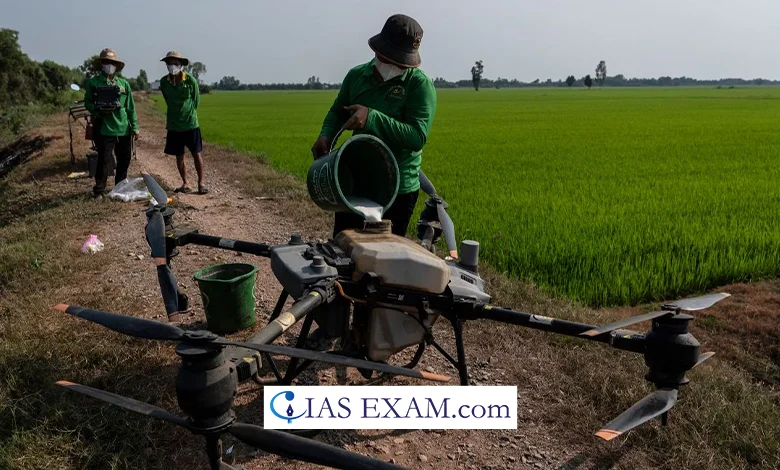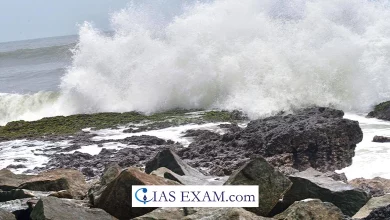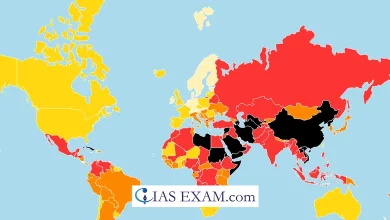Daily Current Affairs for UPSC
Vietnamese Methods to Reduce Methane Emissions
Syllabus- Environment [GS Paper-3]

Context
Vietnamese rice farmers are adopting new methods to cut down on methane emissions.
Key Highlights
- Irrigation Methods: Vietnamese Rice farmers are adopting a water-saving irrigation method called alternate wetting and drying (AWD). AWD reduces methane emissions as it keeps paddies wet but not continuously flooded, in contrast to traditional techniques.
- Using Drones: To save the labour costs they are opting drone technology.
- Stubble Disposal: Once plants are harvested, the farmer no longer burns the rice stubble — a chief purpose of air pollutants in Vietnam. Instead, it’s accrued by the Loc Troi Group on the market to other businesses that use it as farm animals feed and for developing straw mushrooms, a popular addition to stir-fries.
Rice Cultivation & Climate Change
- Rice is a semi-aquatic plant cultivated in flooded fields, where it thrives under a layer of stagnant water.
- This creates the correct anaerobic conditions for bacteria to thrive on decomposing organic matter (in particular rice straw residue) and launch methane.
- Poor absorption by means of the rice plant of nitrogen-based fertilizers, often overused through farmers, leads to nitrous oxide emissions.
- This phenomenon contributes considerably to international methane emissions, with rice manufacturing alone accounting for approximately 10% of these emissions worldwide.
India’s Methane Emissions through Agriculture
- India’s methane emissions in 2016 were 409 million tons CO2 of which, 73.96% was from Agriculture sector, 14.46% from Waste sector, 10.62% from Energy sector and 0.96% was from Industrial Processes and Product Use sector.
- The foremost resources of methane emissions in India are enteric fermentation and paddy cultivation.
Measures to Reduce Methane Emissions
- National Mission on Sustainable Agriculture (NMSA): This undertaking through the Ministry of Agriculture & Farmers Welfare promotes weather-resilient practices, which includes strategies that lessen methane emissions during rice cultivation.
- Livestock Management: The National Livestock Mission promotes practices which can lessen methane emissions from cattle. These practices consist of:
- Green fodder manufacturing
- Silage making
- Chaff reducing
- Total blended ration feeding
- Biogas Programs: The New National Biogas and Organic Manure Programme (NNBOMP) and the Gobar-Dhan scheme encourage the usage of biogas made from farm animals dung and natural waste.
- Though India has opted numerous measures, but, India isn’t presently a part of the Global Methane Pledge, an international agreement to reduce methane emissions by 30% by 2030.
Source: The Indian Express
UPSC Mains Practice Question
Q.Consider the following: (2019)
- Carbon monoxide
- Methane
- Ozone
- Sulphur dioxide
Which of the above are released into atmosphere due to the burning of crop/biomass residue?
a) 1 and 2 only b) 2, 3 and 4 only
c) 1 and 4 only d) 1, 2, 3 and 4
Ans – “d”





.png)



